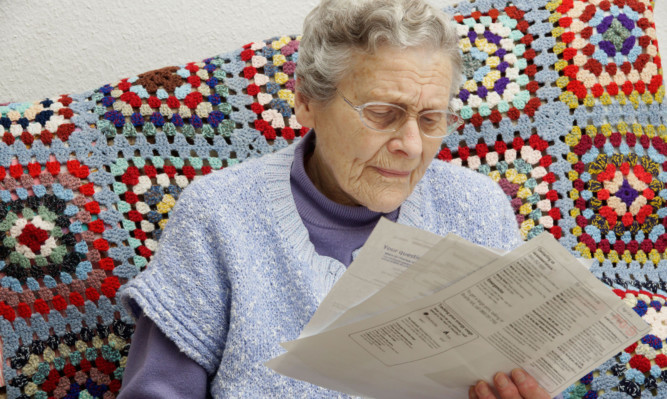
Stronger action is needed to protect older people who are at risk of financial abuse, according to Age UK.
The charity said an estimated 130,000 older people across the UK have suffered some form of financial abuse from someone known to them since turning 65 – and those with dementia or reduced cognitive function are particularly vulnerable.
It wants health and social services and the financial sectors to work more closely together to recognise the signs of financial abuse and report them.
Age UK said generally, financial abuse means taking advantage of a position of trust such as a friendship or a family relationship to steal from a victim.
It said women are particularly likely to suffer financial abuse and even the loss of a small amount can be catastrophic, particularly for those living on low incomes.
Age UK said that with around 300,000 older people dependent on others for help with financial transactions, there is a need for improved staff training to recognise the tell-tale signs of financial abuse and to help older customers.
It said disability and cognitive decline are factors that increase the risk of financial abuse. Being cut off from family, friends, and a social network can also make people more vulnerable to such abuse.
Caroline Abrahams, charity director at Age UK, said: “An ageing population brings many positives but also challenges, such as the steep rise in the numbers of older people with dementia and other cognitive problems – which we know are a major risk factor for financial abuse.
“That’s why it is so important that we develop practical tools for organisations, not just in the financial sector but in health and care too, to help staff who engage with older people to be alert to cognitive decline, the consequent risks of financial exploitation and abuse, and how best to prevent and tackle them.
“In addition, the fact that the overwhelming majority of families want only the best for their older relatives should not blind the authorities to the sad reality, which is that financial abuse does sometimes happen in families, just as we know other forms of abuse do too.”
Here are some of the warning signs that someone may be suffering financial abuse, according to Age UK:
– Sudden changes in their banking habits;
– Sudden involvement from a new “best friend” who may accompany them to the bank;
– Changes in living conditions;
– The inability to pay bills;
– The sale of their possessions;
– The disappearance of financial documents;
– Large cash withdrawals being made;
– Unexplained withdrawals from savings;
– The person reports cash or items being stolen.
And here are some signs that someone may be abusing someone else’s finances, according to Age UK:
– Increased interest in protecting an inheritance;
– A suddenly enhanced lifestyle;
– Asking an older person to pay in cash for work.
READ MORE
Disturbing rise in elderly abuse cases
Anger at dodgy trust deed debt deals for vulnerable people

Enjoy the convenience of having The Sunday Post delivered as a digital ePaper straight to your smartphone, tablet or computer.
Subscribe for only £5.49 a month and enjoy all the benefits of the printed paper as a digital replica.
Subscribe